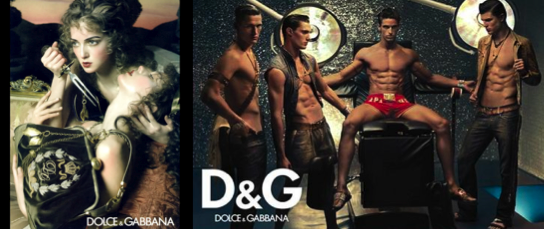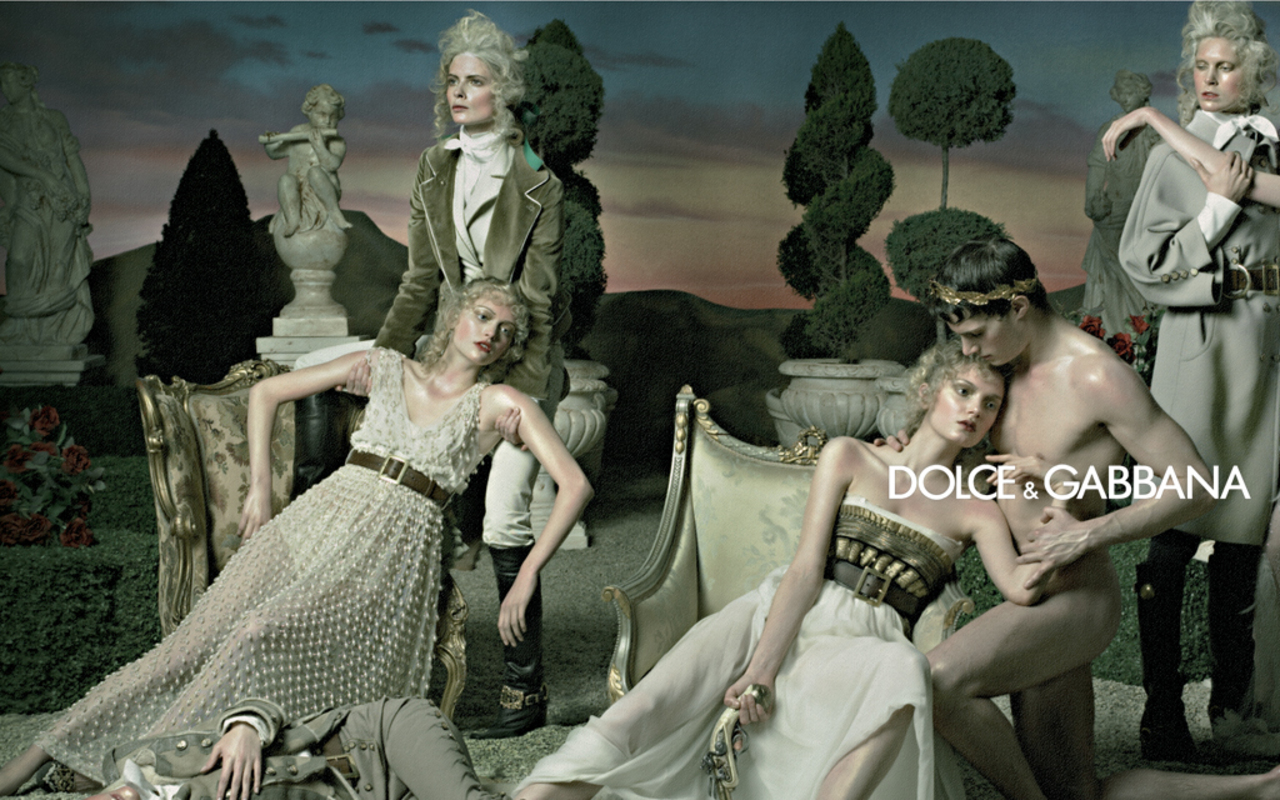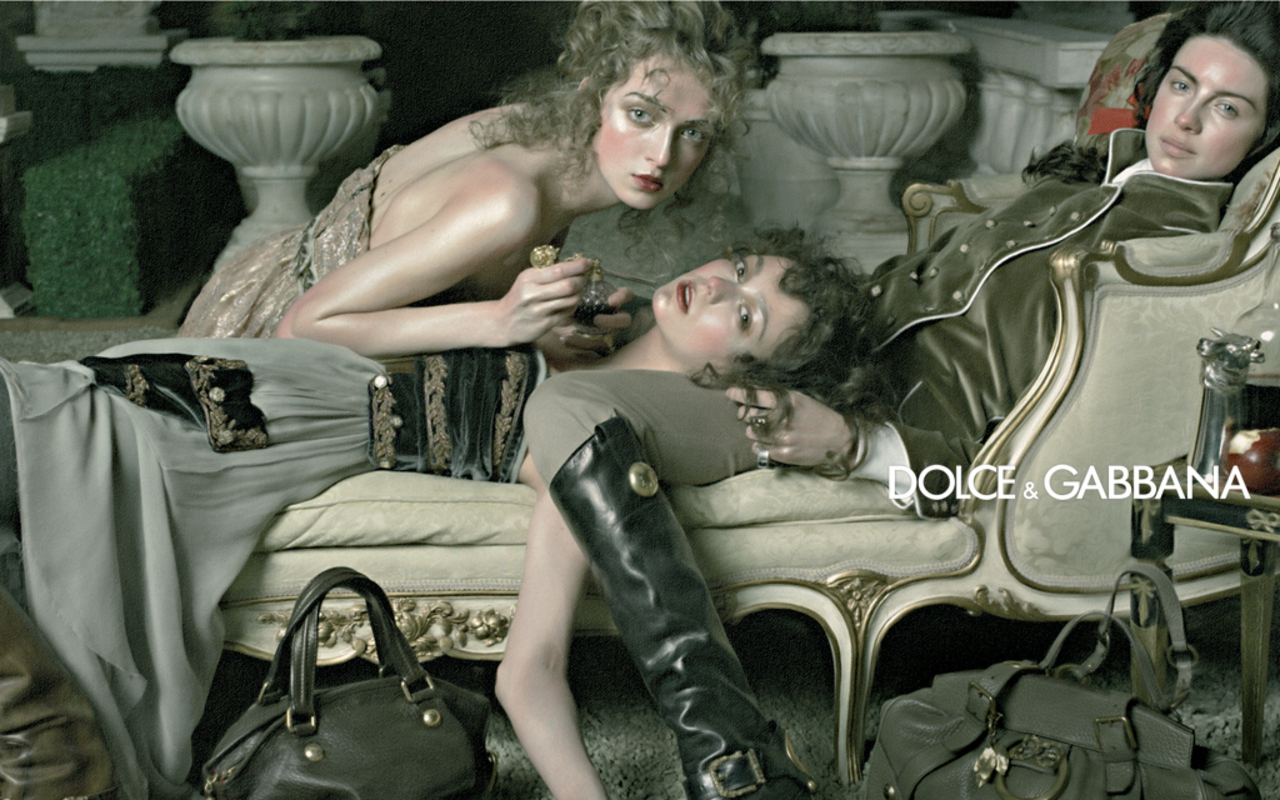What does it mean when these attributes of violence and passivity are embodied by the "wrong" gender?
Dolce and Stefano Gabbana have gained a reputation for their highly controversial advertising campaigns. Two major themes in their ads is the playing with gender and defying stereotypical gender roles, as well as the interplay between violence and passivity. The designers' ads have repeatedly been accused of conveying sexist or excessively violent themes. The two designers, however, maintain that their constand re-defining of gender norms is, far from damaging, actually empowering for women. In response to the scandalized response to one of their 2007/2008 campaigns portraying women "dominating" men in situations reminiscent of BD/SM (Bondage Domination/Sadomasochism), Gabbana publically announced to the magazine WWD, "Since these images have offended someone, we want to stress that we wanted to represent a strong and dominatrix woman, as in today's woman." While some aruged that these advertisements (pictured below on the top right and left, and in the bottom center) were offensive solely because of their violent content, others protested that the only reason these ads were receiving such negative attention was because the objectification was focused on men here, rather than on women. As part of the world of high fashion -- a realm that considers itself more in line with high art than with practicality -- there is a horizon of expectations for D&G's ad campaigns to contain provocative subject matter, in a similar way that audiences expect artists to challenge their comfort zones. And, indeed, Dulce and Gabbana's advertisements are extremely popular, with dozens of websites devoted to showcasing the photography of D&G ad campaigns, featuring desktop backgrounds and social netwroking site layouts with photographs from the ads. What kinds of messages are these gender bending advertisements communicating, and how are they being read by those who consume them?

 |
 |
 |
 |
 |
 |
top center: Spring/Summer 2007;
bottom left and right: Fall/Winter 2006/2007)